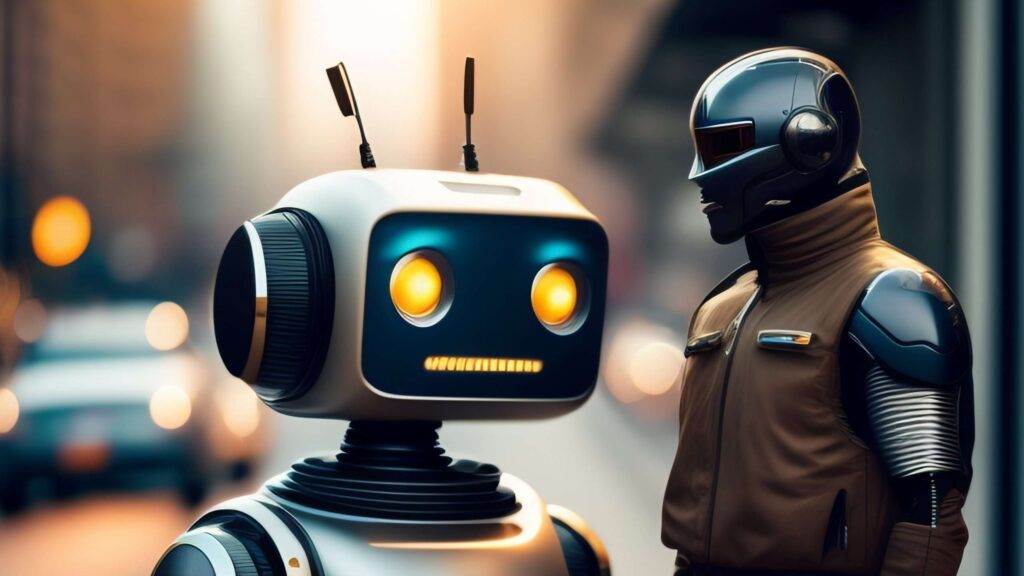From customer service to data retrieval, chatbots and artificial intelligence (AI) are steadily transforming the way we interact with the world around us. Intelligent robots have become commonplace in many aspects of our lives, and it’s no wonder – chatbots and AI technologies are designed to work together and complement each other, leading to incredible opportunities for businesses and customers alike. But have you ever considered the remarkable interplay between these two technologies? How much do chatbots rely on artificial intelligence, and how do they leverage AI to revolutionize customer service and streamline processes? In this blog post, you’ll gain a comprehensive understanding of the interconnectivity between chatbots and AI, and how this interplay can help enrich user experiences and improve business efficiency. You’ll learn about the ways in which chatbots use AI to enhance user interaction, understand customer needs and preferences, and provide unprecedented levels of customer service. We’ll also discuss these developments’ implications and how to utilize the tools at your disposal best to harness their potential. By the end of this post, you’ll be more informed and empowered to maximize the capabilities of chatbots and AI for improved user engagement and better business outcomes. So read on to discover the fascinating relationship between chatbots and artificial intelligence!
Understanding Chatbots
A chatbot, or conversational agent, is a computer program designed to simulate human conversation and interaction. It uses natural language understanding (NLU) to interpret and respond to user input, allowing it to provide automated customer service, provide information, complete tasks, and more. Chatbots are everywhere, from retail and banking to healthcare and government services, and they’re becoming increasingly popular as organizations realize the potential benefits of automated interaction. Chatbots use a variety of different technologies to provide their services. Some of the most common are natural language processing (NLP), machine learning (ML), and artificial intelligence (AI). NLP allows the chatbot to understand and interpret user input, while ML enables it to learn from user interactions and improve over time. Conversely, AI allows the chatbot to make decisions based on the data it has collected and its knowledge base. These technologies allow chatbots to provide automated customer service, respond to queries, and complete tasks quickly and accurately.
How Chatbots Leverage Artificial Intelligence
Chatbots and AI are interconnected in a number of ways. AI enables chatbots to understand user intent and make better decisions in order to provide better customer service. AI can also help chatbots to identify customer needs and preferences, as well as respond to customer queries with more accuracy. AI can also be used to continually improve the chatbot’s understanding of user input, allowing it to become more efficient and provide higher quality customer service. In addition, AI can help chatbots to process large amounts of data quickly and accurately. This allows them to generate insights and provide personalized recommendations and services. For instance, many customer service chatbots use AI to help customers find the best solution to their problems quickly. AI can also be used to identify and analyze customer trends, allowing businesses to understand their customers better and tailor their services accordingly.
The Benefits of Combining AI and Chatbot Technology
The combination of AI and chatbot technology provides a number of benefits for businesses. Firstly, AI-powered chatbots are able to provide better customer service, as they can understand user intent and provide accurate and personalized responses. This can significantly reduce the number of customer service requests, freeing up staff to focus on more important tasks. AI-powered chatbots can provide insights and recommendations based on customer data. This can help businesses to identify customer trends and better target their products and services, leading to improved customer engagement and loyalty. Finally, AI-powered chatbots can also automate a wide range of tasks, from data retrieval to order processing, freeing up staff to focus on more creative and strategic tasks.
Challenges of Integrating AI and Chatbot Technologies
As with any technology, some challenges are associated with integrating AI and chatbot technologies. For instance, developing and maintaining an AI-powered chatbot can be a time-consuming and complex process. It requires a significant amount of data to train the chatbot and ongoing maintenance and development to ensure it remains accurate and up-to-date. AI-powered chatbots are only as good as the data they are trained on, so ensuring the data is accurate and up-to-date is essential. Finally, AI-powered chatbots can be expensive to develop and maintain, so ensuring they are cost-effective for the business is vital.
Future Possibilities for Chatbot-AI Interaction
The possibilities for chatbot-AI interaction are virtually limitless. AI technologies are becoming increasingly sophisticated, allowing chatbots to become smarter and more conversational. In the near future, AI-enabled chatbots will be able to understand complex customer queries, provide personalized recommendations, and even anticipate customer needs. This could lead to unprecedented levels of customer service and engagement and improved customer loyalty and satisfaction. In addition, AI-enabled chatbots will be able to process large amounts of data quickly and accurately, allowing them to generate valuable insights and provide personalized services. Finally, AI-enabled chatbots can automate a wide range of tasks, from data retrieval to order processing, freeing up staff to focus on more creative and strategic tasks.
Conclusion
Chatbots and AI are becoming increasingly intertwined, and the implications of this relationship are profound. By leveraging AI technologies, chatbots have become more conversational, accurate, and efficient, allowing businesses to provide higher customer service and engagement levels. In addition, AI-enabled chatbots can process large amounts of data quickly and accurately, allowing them to generate valuable insights and provide personalized services. As AI technologies become increasingly sophisticated, the possibilities for chatbot-AI interaction are virtually limitless, and businesses will be able to harness their potential for improved customer service, customer engagement, and better business outcomes.




